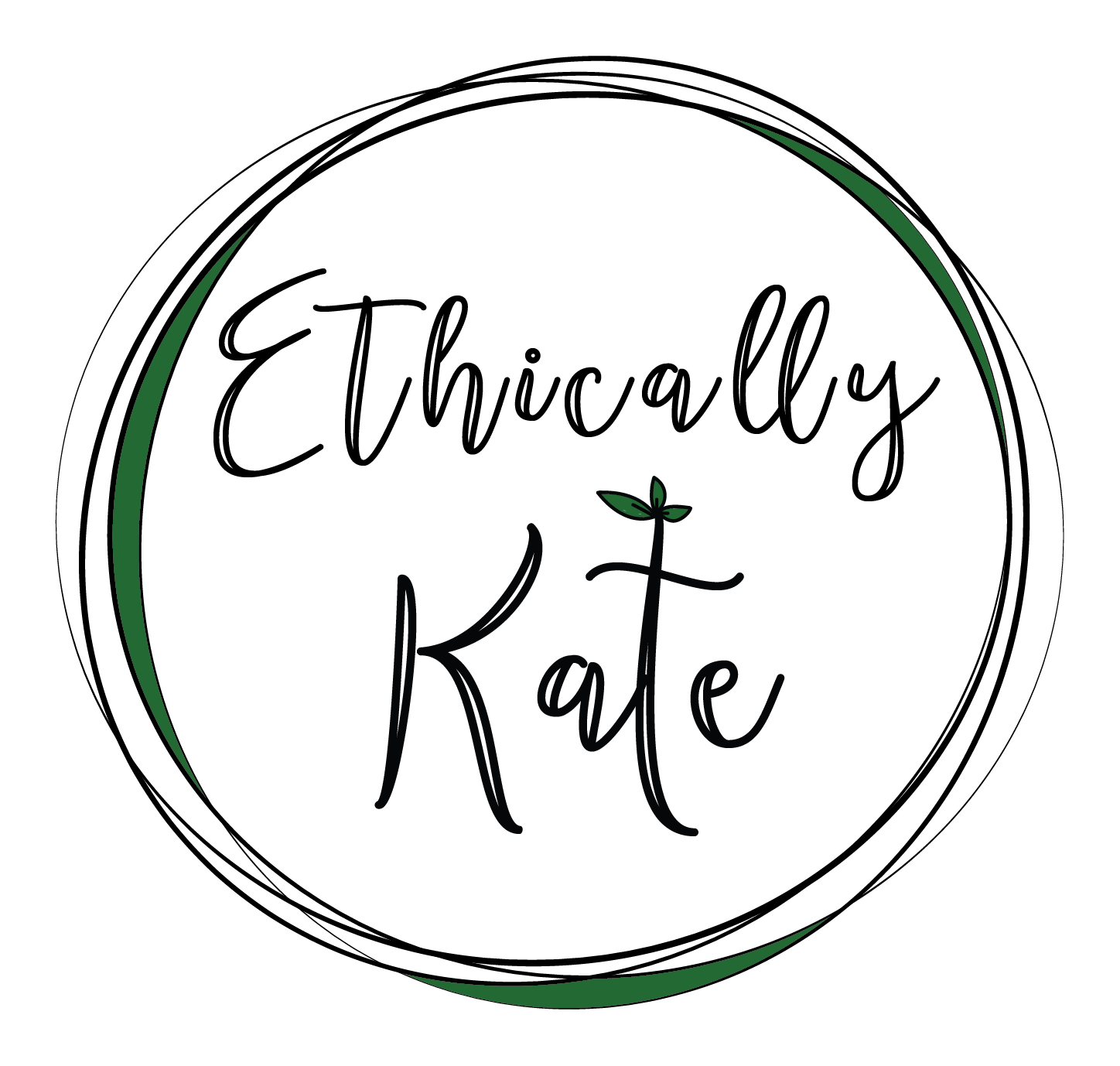What is the Living Wage?
When I first started investigating the ethics of fashion companies, one of the first questions I asked was “Do you pay your staff a living wage?” I quickly realised that this question was not as simple as I wanted it to be and the answers I received weren’t always helpful in my quest to understand if the brand was one I wanted to purchase from (if they were ‘ethical’ or not).
I longed for the living wage to be the golden ticket to identifying if a brand cared for their employees. But just like everything in the world of environmental and social sustainability, it’s not that simple. I’ve kept attuned to living wage conversations over the years and as a sustainability advocate I am frequently asked about its legitimacy.
On the 1st of September 2023, the living wage in Aotearoa New Zealand will increase by 9.9% taking it from $23.65 to $26 per hour. This large leap seems like the best time to dive into what the living wage is, why it’s helpful, and how it can go wrong.
Let’s start by going back to the basics.
What is the minimum wage?
The minimum wage in New Zealand is enforced by law. Paying an employee less than the minimum wage is illegal, even if you agree to a reduced rate with an employee. Aotearoa New Zealand was the first country in the world to establish a Minimum Wage Policy in 1894. The minimum wage in Aotearoa New Zealand can be set, boosted or frozen by the government.
There are currently three categories of minimum wage in Aotearoa New Zealand:
Adult minimum wage: This applies to all employees who are over 16 and not categorised as trainees or starting-out.
Trainee minimum wage: This applies to employees aged 20 years or over whose employment agreement states they must complete at least 60 credits a year of an industry training program.
Starting-out minimum wage: This applies to 16-17-year-olds who have completed less than 6 months of continuous service with an employer. After 6 months they receive the adult minimum wage. This category also applies to 18-19-year-olds without 6 months of continuous service who have received social security benefits for 6 months or more.
The minimum wage for adults is currently $22.70 and $18.16 for trainees and starting-out employees as of 1st April 2023.
The New Zealand minimum wage is based on inflation rates and wider economic conditions, whereas the living wage is based on more specific variables such as the local cost of housing, food, and healthcare. The New Zealand minimum wage is mandated by law and the living wage is optional for employers.
What is the living wage?
The first living wage campaign began in April 2012 as a collaboration of faith groups, community organisations, and unions who called upon the government, employers, and society as a whole to strive for a living wage for all households as a necessary and important step in the reduction of poverty in Aotearoa New Zealand. A year later, Living Wage Movement Aotearoa New Zealand, an incorporated society, was formed and they lead the Living Wage movement today.
The group's definition of a living wage is:
"The income necessary to provide workers and their families with the basic necessities of life. A living wage will enable workers to live with dignity and to participate as active citizens in society."
The original living wage in 2012 started at $18.40 per hour. Since then it has been updated annually. For example, it was $18.80 in 2014, $19.25 in 2015, $20.20 in 2017, $20.55 in 2018, $21.15 in 2019, and so on. The current living wage is the 2022/23 rate at $23.65 which is in effect until 31 August 2023 before it changes to $26 in September 2023.
A brief interlude from all these figures and details to share a snapshot of a few of the jobs I’ve had over the years (writer, model, speaker, musician, promo girl, nanny, after school care teacher).
How is the living wage calculated?
The full annual recalculation considers the latest national data on:
Rent.
Food costs and needs.
Energy and heating costs and usage.
GP visits and prescriptions.
Broadband and mobile charges.
Costs of early childhood, primary and secondary education.
Miscellaneous but essential expenses: savings, clothing, services, modest recreation.
KiwiSaver contributions, subsidies, and tax credits are also considered, plus if a living wage is enough for any worker to live with dignity, it must also be sufficient for families with children. That’s why the living wage is calculated to support the needs of two adults and two children on 1.5 incomes where there are 60 hours (total) of employment.
The living wage calculation process is independent of the Living Wage Movement and conducted by the Family Centre for Social Policy Research Unit.
Who implements the living wage?
Over 420 employers across Aotearoa New Zealand have chosen to become accredited Living Wage Employers. This includes Westpac, Kiwibank, ASB, ANZ, Wellington City Council, Dunedin City Council, the government, Vector, Be Free Grocer, Tonzu, and Chia Sisters. By 1 September 2023, these accredited Living Wage Employers will have to pay the living wage rate of $26.00 to have their certification renewed. Each employer also pays an accreditation fee which goes towards advocacy work of the Living Wage Movement.
Why is the living wage helpful?
At a surface level, the living wage benefits seem obvious. Paying someone enough so they can afford to live… What a brilliant idea! But there are several less obvious, nuanced benefits.
Several studies show that when people are paid well and don't need to work long hours, they are more likely to be active, contributing members of their community. With enough to live on, they have spare time to engage with their community or invest in further education (and also rest with a bit of Netflix). This improves life opportunities, strengthens communities, and positively impacts whole families and future generations.
When workers earn a living wage and have money to not only buy enough food, but to buy more nutritious food, there are health benefits for the whole system too. People are less susceptible to illness, less likely to take sick days, and can afford health care that helps them recover more quickly when they do get sick.
A living wage also supports the spread of gender equality by ensuring women (among the lowest paid workers) receive an equitable wage. Boosting the income of the lowest paid workers is a powerful driver of social and political inclusion, reducing social and economic inequality.
Benefits to employers
Increased productivity: Healthy and happy employees are generally more productive. Ensuring a better standard of living for staff is one of the best ways to boost their output, creating a win-win scenario. One study found that a $1 increase in minimum wage improved 'low performers’ productivity by 22.6 percent.
Improved retention: There is a direct correlation between wage rates and employee retention. By paying staff more, you can remove one of the most common motivations for seeking alternative employment opportunities - money!
Reputational benefits: Customers vote with their wallets. Touting a Living Wage Certification is an effective way to enhance reputation among a customer base.
What are the downfalls of the living wage?
It doesn't always have its intended impact.
As mentioned, the living wage is based on costs for a family of four. It’s therefore more generous to a household of two adults without children and more stringent for a family with three or more children or a solo parent. It will also be more generous to a family without a disabled child than to a family with one.
The living wage does not differentiate between the type of employment.
Employees are extremely different to contractors in how they are paid for their work, yet the Living Wage certification and concept does not treat them differently. I know businesses who are Living Wage accredited and pay contractors a living wage only. A contractor does not get all the benefits that an employee does (KiwiSaver contribution, sick days etc.) so while paying contractors a living wage on paper, in reality it’s barely minimum wage.
Smaller businesses suffer.
The biggest downfall I have personally seen with the living wage is the impact on smaller businesses that struggle to pay staff and themselves. Most small business owners do not pay themselves a wage for several years, until their business is well established (if that!). I work with some of the most brilliant sustainable companies who often have staff come on board who are very happy to start on low (minimum) wages and work their way towards a high wage. Yet the living wage concept doesn’t allow for this nuance and some businesses in these types of situations are looked upon negatively because they don’t pay a living wage. Small businesses wrestle with their desire to be socially responsible while also continuing to exist! As a content creator, if I were to draw a line in the sand and say I will only work with a business to promote their work if they pay all staff (including themselves) a living wage, I’d have to cut hundreds off my list.
Wages aren’t everything.
Fair wages are important, but they are only one indicator of a good, fair working environment. There have been several cases in Aotearoa New Zealand of employees speaking up from businesses who are Living Wage Accredited but have had unreasonable work conditions, expectations, and other situations like workplace incidents that are not dealt with appropriately.
Reduced employment.
Increases in labour costs can lead to fewer job opportunities. I saw the direct impact of this when I founded an in-home childcare back in 2017. My staff were very happy to be paid minimum wage for their nights spent watching TV on the couch while they babysat, yet my values around fair wages were pushing me to become a Living Wage certified business. If all staff were paid a living wage, the cost of in-home childcare for families would have been pushed up so high that my staff received far less work.
Examples in the tea fields of India.
I bet you didn’t expect this article to take this kind of turn! But on my recent trip to India, I found myself at a retreat in the middle of tea fields that extended as far as the eye could see. Strangely, these tea fields weren’t bustling with people carrying baskets like the ones you see on Dilmah tea advertisements. They were completely empty, evoking an airy feel that made me think no one had walked those tea fields for years.
When I asked a local why so many kilometres of tea fields looked deserted, he confirmed that they had been abandoned. When I asked why he explained that the price consumers were prepared to pay for tea was dropping while workers had (understandably) unionised and pushed for more pay. Tea plantations couldn’t afford to keep the harvesting going. This led to hundreds (perhaps thousands but I struggle to remember exact details) of employees being let go. The tea fields remain abandoned as there are local rules around how much land must not be developed and must remain tea fields.
Another example of a similar situation that exposes the complexity of wage enforcements, but with more precise detail that didn’t come from a conversation over (ironically) tea, is a recent case study on the tea industry in Assam. It isn't a direct comparison of the living wage versus minimum wage, but it shows that if higher wages are enforced by the government, businesses can suffer, causing major strife to employees.
For context, the tea industry is India’s second largest employer. Tea workers comprise 17% of Assam’s population and Assam (a state in North East India) is responsible for more than half of India’s total tea production. In India, the state sets the minimum wage paid by tea companies to their labourers.
In March 2023, nearly 2,000 women labourers from the tea gardens of Dhekiajuli, a town in Assam's Sonitpur district, took to the streets demanding a "reasonable" hike in their daily wages after the state government approved a 50-rupee ($0.7) increase. The Assam branch of the Indian Tea Association (ABITA), which represents the interests of tea planters and estate owners, petitioned in the Gauhati High Court against the hike.
Later that same month, growers convinced the high court in Assam to halt the 50-rupee per day interim wage increase for tea workers. The Indian Tea Association was joined by 17 tea companies in filing the motion, citing the state’s failure to properly examine financial and other impacts. One industry source described the wage hike as a "political gimmick" that could lead to the closure of many tea gardens and another said 'political force cannot trump economic forces' and that this would be a detrimental decision for the industry.
This is an example of a state requiring employers to pay a price that they cannot afford, even though workers need better pay (which no one contests) and begs the bigger question, what happens if the risk is then mass business closure and no work or massive industry shift? This example reminds me of the question I am most frequently asked about when it comes to ethical fashion. ‘But if I boycott fast fashion brands, will all the workers lose their jobs?’ That’s a question I’ll answer another day.
The living wage is important, but we cannot stop there.
The Living Wage Movement has achieved what it set out to do, but unfortunately for those of us who long for a simple solution to identifying a socially responsible organisation, the living wage is not the magic silver bullet. It’s an ongoing conversation and movement that all businesses need to be engaged in whether they’re for or against it. Fair pay is at the core of human rights and a good quality of life, but who is responsible for giving out that pay is a nuanced discussion.
The more I look into the living wage the more questions I have. If a business cannot stay afloat when paying all staff a living wage, should they be in business? Is it okay for the responsibility of a living wage to fall predominantly on employers? Should the government step in and subsidise? How can fair transitions towards a living wage happen in industries that have relied on low wages for so long? How do we regulate, implement, and encourage work places to keep making positive changes for employees if they are already Living Wage certified? Should big corporations that make millions of dollars be held to different standards than small businesses or producers who are barely surviving?
The living wage increase on the 1st of September will come as a great help to hundreds of employees. But it’s crucial that we see the living wage as a movement rather than a full stop. I don’t have all the answers, but I hope you use the information in this article to continue the living wage conversation and decide how you’ll conduct yourself as a consumer, employee, or an employer.
Sources:
Bolton, D. (2021). Assam High Court halts tea worker wage increase. STiR Coffee and Tea Magazine | Global Business Insight on Coffee and Tea. https://stir-tea-coffee.com/tea-coffee-news/assam-high-court-halts-tea-worker-wage-increase/?fbclid=IwAR3nlv5NCsxI6qVQ9C3fPU5mUPMUZpBahHg17oG31wghIbjM1l67EjGxr-o
From Living wages to Sustainable livelihoods. (n.d.). Royal Society Te Apārangi. https://www.royalsociety.org.nz/research/from-living-wages-to-sustainable-livelihoods/
Heggie, J. (2022, September 8). Toward a living wage: What it is and why it matters. Environment. https://www.nationalgeographic.com/environment/article/paid-content-toward-a-living-wage
Living Wage Movement Aotearoa New Zealand. (n.d.). Living Wage Movement Aotearoa New Zealand. https://www.livingwage.org.nz/
McLean, L. (2023, May 19). Thriving, not just Surviving - The living wage. Employsure NZ. https://employsure.co.nz/blog/thriving-not-just-surviving-the-living-wage/
Writer, S. (2021, March 23). Indian tea workers curse Modi’s party for broken wage pledge. Nikkei Asia. https://asia.nikkei.com/Politics/Indian-tea-workers-curse-Modi-s-party-for-broken-wage-pledge?fbclid=IwAR03pdaWHqx8K2Vv_Dlp_GKS2cHr0dKMZRjffZRwKfWDegIwTKIVQPsDt40





